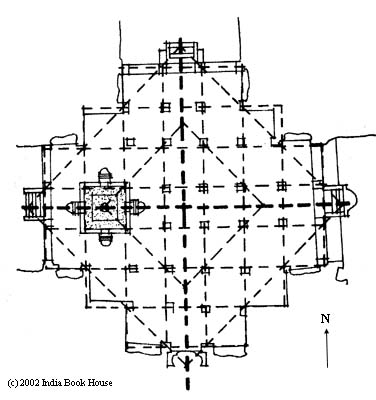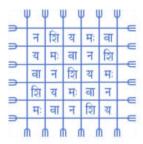Art historians like George Michell, scanned the entire caves and brought out a book the beautifully represents Elephanta pictorially to the average reader. It has a few very interesting things about it that triggered my thoughts further on Elephanta, and it just blew my mind when i realized what i possibly found. I might be wrong, but i dont feel so.
Elephanta's main cave hosts a four doored chamber which contains an incomplete Shiva Linga. In front of it stands a hall of pillars rather unassuming to start with. I think the cave faces east and on the south wall is our very famous Trimurti. Is all this leading somewhere, maybe... Lets walk a step back, what is Elephanta caves all about?
Elephanta caves hosts a complete cave dedicated to Shiva, with 11 iconographic representations from his various mythologies, 11 out of 25 forms of Shiva have been depicted here. Ok, if you though Vishnu was 10 and Shiva was 1, let me correct this, Vishnu is 10 but Shiva is about 25 forms.
This does not end here, i do not know the reason for picking these particular sculptures, am yet to figure that out, but what i know is that, what George Michell tried to conclude in these caves was that the ground plan represented some sort of a mandala that looks like this.

The square on the left is the shrine chamber that hosts the Shiva linga within it. The point i am trying to make is that much as he hit the nail on the head and said it represented a ground plan, i think he got it wrong diagramatically. Why do i say this?
For this we need to move away from pure are history and architecture towards ritual. The worship of Lord Shiva brings in the use of mystical diagrams like yantras to perform fulfilling worship of the Lord. The most auspicious yantra that represents Lord Shiva looks like this.

Now, counting the number of squares within this yantra we come to 25 (5x5) squares. Superimpose this on the ground plan of the cave, but not diagonally. The floor of elephanta now represents a living yantra, each square marked by a pillar at the corners, with the shrine chamber at the first square of row three, meaning square 11. (i hope you got the square) I think this number 11 is coincidental and may not symbolically represent the number of Shiva scultpures inside these caves. What remains a mystery to me right now is whether there was a lot more to this ritualistically or was this purely a representation to carry the tradition forward.
Now this might look normal and matter of fact to you. Well it does not look normal or matter of fact to me. I have woken up to this after 2 years of breaking my head on it, and man! this enlightenment makes a difference to me and makes me want to value these sculptures more than just beautiful depictions on stone. This is a hint of the potency that evolves when architecture and ritual combine which our ancestors have left behind for us, to take note of and pursue ( i dont mean to preach).
The more we soak ourselves in it, the more we dig deeper, the clearer it gets, and we are brought face to face with this potency. I cant explain this.. but i can only say its worth all the study i did, its worth all the frustration i have been through, its worth all the belief and faith i bank on! There IS something here to be looked at, cherished and valued.












